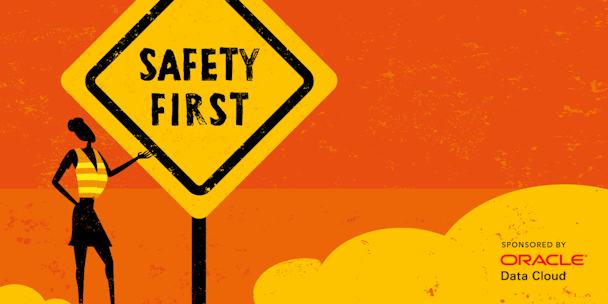Safety First: How Oracle helped Vice to Tackle Keyword Bias
Brand safety is no small issue for advertisers. The phrase itself has morphed into a catch all for a multitude of challenging advertising problems.

Safety First: How Oracle helped Vice to Tackle Keyword Bias
Appearing next to unsafe content remains the biggest fear for U.S CMOs (according to research from Teads) and the vast majority (94%) of advertisers have brand safety concerns, with almost half saying they don’t think platforms like YouTube and social networks like Facebook are doing enough to address these issues.
In a programmatic world, advertising transactions happen in less than a second. It’s no surprise then that brands are on the more cautious side when creating ‘keyword blacklists’ in order to make sure that these placements don’t end up next to inappropriate, harmful or fraudulent content. And for good reason - research from the CMO Council cites that almost half of us would abandon brands if their ads appeared next to offensive content or fake news.
Keywords have been used as a tool for brand safety for decades and according to Vice, the use of blacklists (ever-growing lists of specific words and phrases that are deemed ‘unsafe’) has reached an all time high.
For example, ‘war’ may well be one of the most comment words to feature on such a list. But a level of contextual intelligence is required to know the difference between an article featuring triggering footage of a conflict that’s happening now, and an article talking about Game of Thrones.
More worryingly is that these lists may also be revealing an unconscious bias, and effectively steering brands away from important and necessary topics, including race, religion and LGBTQIA issues.
Dominique Walker, Director of Audience Products & Platforms, VICE Media: “Vice’s storytelling lends itself to the most diverse generations in history. Unfortunately, the improper use of keyword blacklists is counterproductive to this mission, resulting in unintended consequences.”
Diversity and Inclusion in Keywords
Following an 18-month investigation into its own keyword data infractions, Vice found the term ‘gay’ to be one of the most flagged keywords, placing higher on blacklists than words like ‘death’, ‘heroin’, ‘gun’ and even ‘rape’.
To ensure the promotion of diversity and inclusivity across all its platforms, while creating brand safe environments, Vice implemented Oracle Data Cloud’s contextual brand safety solution.
“Instead of just accepting the lists given to them by clients – which are flawed and in some cases even biased – and accepting them as the norm, Vice has worked with us to create a more context-led, custom brand safety approach that fits their voice and their editorial brand” says Andrew Smith, head of content strategy at Oracle Data Cloud.
Today, Vice uses one of the most sophisticated installations of Oracle’s video and contextual intelligence products to categorise content across all its owned and operated sites, in 17 different languages.
“We helped Vice to establish a base line for understanding all of their content and also, enable them to change the conversations they were having with clients around brand safety. It’s much more than just looking at individual words, it’s looking at the content as a whole – video, text, everything – and making an intelligent decision from that” says Smith.
It’s not just Vice that is dealing with this issue; every publication is subject to keyword blacklists. The majority of the time these are centralised, created and distributed to publishers across entire campaigns, or agencies, and the lists are constantly being updated with new words.
“These lists aren’t evolving, they are just growing in size. It’s inherently flawed, especially when there are more sophisticated, contextual solutions available to understand whether content is right for a brand or not. These kinds of solutions need to become the norm.” says Smith.
Contextual technology
According to Smith, brands must shift from a cautious position to a confident one and work collectively to set a new standard for ‘contextual brand safety’. “By understanding the true context of every web page, a brand benefits from both safety and scale. Newer contextual technologies maximise the impact of every dollar spent. They assure immediacy, relevance, brand safety, and insight.”
There is, however, still a long way to go in convincing brands. “Often we’ll take a look at the URL’s that get flagged by a ‘blacklist’ system from a client,” says Smith. “50% of the time there might be a good match to something that’s deemed unsafe or inappropriate. But 50% of the time it’s complete nonsense, and a space or audience that the brand would wrongly be missing out on.”
For Smith, it’s more than a question of reaching more people. It is about ensuring that important topics aren’t avoided for no reason. “There is an abundance of caution, which leads to bias towards topics that just shouldn’t be avoided.”
Learn more about the Oracle Data Cloud at http://oracledatacloud.com
Content created with:

Oracle Advertising and CX
Oracle Advertising helps marketers use data to capture consumer attention and drive results. Used by 199 of AdAge's 200 largest advertisers, our Audience, Context,...
Find out more